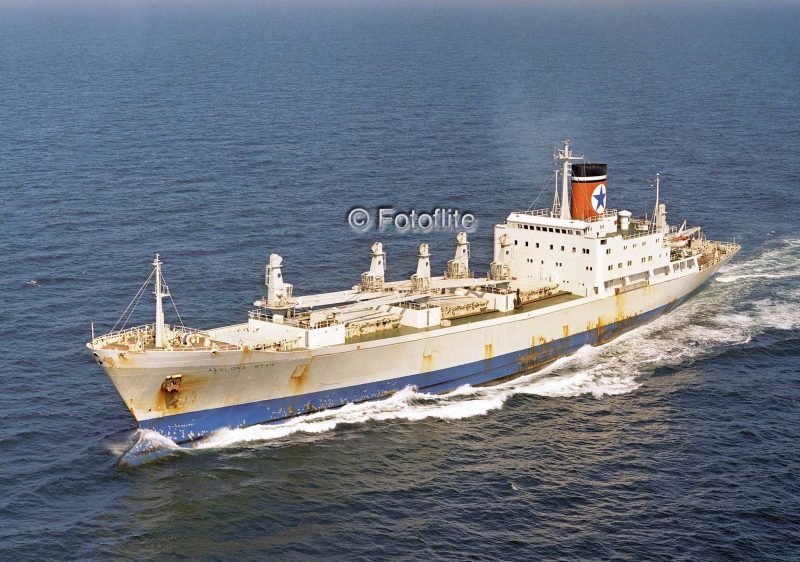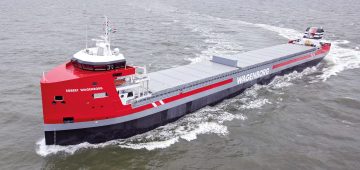The Keren – Part One
By Sandy Kinghorn
I was enjoying home leave in between ships when, on 1st April 1982, Argentina invaded the Falklands. My first reaction was total disbelief, followed by dull astonishment. Of course Argentina had, in theory, coveted those wild and lonely islands for generations, using the doubtfully valid argument that since they took independence from Spain last century, all that which had been Spanish should now be theirs.
On my first trip to Buenos Aires over thirty years previously the General Post Office was decorated with a handsome mural map of Argentina, on which the ‘Malvinas’ were, of course, prominently depicted. I recall good humoured discussion over this with local persons and soon came to realise that, sure, they said, the ‘Malvinas’ should be theirs, but the Argentinian is strictly an urban person, a lover of the bright city lights, in no way a pioneer of the wide open spaces far from home as a permanent way of life. And the Falklands offer as much sophisticated ‘Nitelife’ as the average Hebridean village which Port Stanley so closely resembles. I was told by a reliable source that some time during the 1930s, London offered Argentina the Falklands lock, stock and barrel in return for a new British Embassy in Buenos Aires to be politely told, “thanks, but no thanks!”
But, like many another ruler seeing a sudden overseas conquest as a successful means of distracting his population from its own considerable homespun grievances, President Galtieri took the big step. At least, his armed forces did. They went, they saw, they conquered, and soon were chased back home, with few of their lads who did the fighting ever wishing to return. Led to believe they were liberating an Argentine population from the hated British yoke, they were astonished when, as their heavy armoured personnel carriers rumbled through Stanley’s little streets, they found a British population speaking English, smoking English cigarettes, so different from their own brands, and who looked upon these ‘muchachos de la guerra’ with a mixture of concern and pity. The Argentine officers took comfortable billets in town, posting their inexperienced rookies, stiffened by a hard core of marines battle-hardened in Argentina’s own internal struggles, to the rugged terrain swept by snow, rain and biting winds, to fend as best they could until the avenging British returned. It became not uncommon for a Falklands back door to be knocked upon of an evening and opened to find a group of tired, frightened, shivering young men from the conquering army asking, “Please can you spare us cup of tea, Missus?”


To remove this extraordinary invasion Britain mustered her forces in a remarkably efficient manner. To provide transport much of our Merchant Navy became STUFT, Ships Taken Up From Trade, one of them the Avelona Star, currently unloading Cape apples at Sheerness was swiftly transformed into a Garrison Rations Supply Ship at Portsmouth, a small helipad was erected aft while Portakabins on the bridge deck provided accommodation for the dozen or so MOD civilian staff who would see to her cargo. This now included not only the residue of the Cape apples and other refrigerated foodstuffs, but a ship-full of everything a modem army needs to survive in the field, from Mars Bars to toilet rolls.
The striking Blue Star funnel was dramatically toned down as a form of camouflage. Grey paint was intended but a sudden shortage in Portsmouth at the time led to white paint being substituted which, beneath the black funnel top and over the white superstructure and grey hull melted uncannily well into the Falklands landscape.

Subscribe today to read the full article!
Simply click below to subscribe and not only read the full article instantly, but gain unparalleled access to the specialist magazine for shipping enthusiasts.




Comments
Sorry, comments are closed for this item